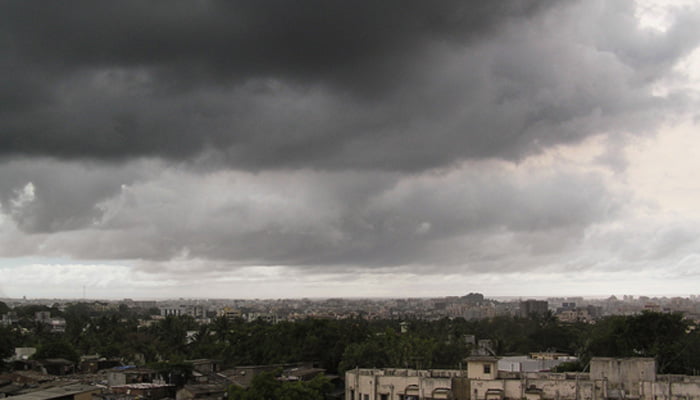Monsoon: Below Normal; Arrival Date In Odisha: June 10, Says Skymet

Bhubaneswar: Contrary to the India Meteorological Department ‘s forecast that the southwest Monsoon will be “near-normal” this year at 96 per cent, Skymet Weather Services has claimed that the Monsoon is likely to be “below normal”, to the tune of 93 per cent.
The private Indian company that provides weather forecast and solutions, says that as regards the Monsoon’s probability for June, July, August and September, there is no chance of excess rainfall (more than 110 per cent of the long period average) and above normal rainfall (between 105 and 110 per cent of LPA), 30 per cent chance of normal rainfall (between 96 to 104 per cent of LPA), 55 per cent chance of below normal rainfall (between 90 to 95 per cent of LPA) and 15 per cent chance of drought (less than 90 per cent of LPA).
The onset month, June, is going to see a very sluggish start and deficit rains are likely to spill into July. The second half of the season would see better rainfall, wherein August is expected to be a shade better than September, but both months can manage to see normal rains. Odisha, Chhattisgarh and coastal Andhra Pradesh are most likely to see normal rains throughout the season.
As informed by the managing director of Skymet, Jatin Singh, the Pacific Ocean has become strongly warmer than average. The model projections call for 80 per cent chance of El Niño during March-May, dropping to 60 per cent for June to August. Going by the projections, the Monsoon this year is likely to be below normal.
Notably, quoting the IMD, secretary, Ministry of Earth Sciences (MoES), M Rajeevan, had in a statement on April 15 said that the seasonal rainfall is likely to be 96 per cent of the Long Period Average (LPA) with a model error of plus or minus five per cent.
The LPA of the seasonal rainfall over the country as a whole for the period 1951-2000 is 89cm.
According to the IMD, southwest Monsoon is likely to be near normal. However, there is very less chance for the Monsoon rainfall to be above normal or excess. “There is a 39 per cent chance of a “near normal” rainfall, 32 per cent possibility of a “below normal” rainfall and 10 per cent chance of an “above normal” rainfall. There is 17 per cent chance of deficient rainfall and only two per cent possibility of excess rainfall, it said.
According to IMD Director General KJ Ramesh, the country is expected to have well distributed rainfall scenario during the monsoon season, which will be beneficial to farmers in the country during the ensuing Kharif season.
The website skymetweather.com had earlier said Monsoon will hit Odisha on June 10.
A lot is at stake on the time of its arrival of Monsoon too. Timely arrival could bring cheer to farmers, while delay could impact the Kharif crop season, the website said. After all, the Monsoon season contributes around 70 per cent of the country’s annual rainfall, thus having a direct bearing on agriculture and economy.
Detailing the Monsoon’s course, the website said that before reaching the Indian mainland, it first marks its attendance over Andaman and Nicobar Islands around May 20. It takes around 10 days before the current makes onset over Kerala on June 1, for a four-month stay.
In its first phase, the Monsoon covers Kochi, Trivandrum and Chennai along with most parts of Tamil Nadu. Simultaneously, it also reaches Northeast India, covering southern parts such as Manipur, Mizoram and Tripura.
The initial phase of Monsoon witnesses progress of Northern Limit of Monsoon (NLM) in an interval of five days.
So, by June 5, the Monsoon covers Karnataka barring its northern parts, entire Andhra Pradesh and some parts of Telangana. Meanwhile, NLM covers entire Northeast India and places such as Dispur, Agartala, Guwahati, Shillong and Imphal start recording Monsoon rains.
Next, around June 10, the Monsoon reaches Mumbai and Kolkata. It covers most parts of Maharashtra, Odisha and Bengal and some parts of Chhattisgarh, Jharkhand and Bihar.
The Monsoon’s next stop is Gujarat and Madhya Pradesh, while it entirely covers remaining parts of Chhattisgarh, Jharkhand and Bihar. Simultaneously, it also makes an entry into East Uttar Pradesh.
After this, we see a gradual slowdown in the Monsoon’s progress, as it reaches its next point almost after 15 days. Around July 1, covering entire Uttar Pradesh, the Southwest Monsoon knocks doors of Delhi, Uttarakhand, Himachal Pradesh and Jammu and Kashmir. Parts of Punjab and Rajasthan also start receiving Monsoon rains. Major cities such as Lucknow, Jaipur, Dehradoon, Shimla, Srinagar and Amritsar also begin drenching in Monsoon showers by then.
Thereafter, the Monsoon takes another long gap of 15 days. Furthermore, by July 15, Monsoon current covers the entire country including leftover parts of Rajasthan, Punjab and Haryana.

Comments are closed.